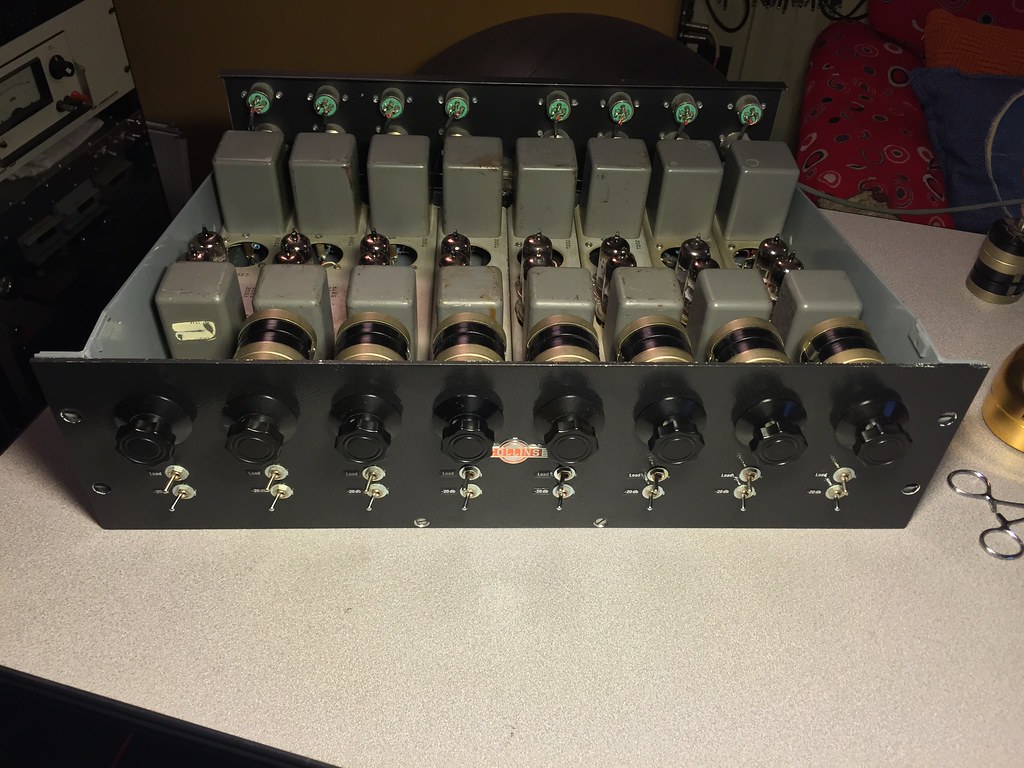Braden Sauder
New member
- Joined
- Oct 30, 2011
- Messages
- 2
Hi all!
I've been wanting to build this circuit for a while now but I'm needing some info on the output transformer. I know the output transformer for the Collins 356a is 16.5k:600 and the primary is rated for 6ma unbalanced DC. The only thing i don't have any info on is the tertiary feedback winding.
just wondering if anyone has any info or any thoughts regarding the feedback winding.
I've attached the Langevin 5116 schematic.
Braden
I've been wanting to build this circuit for a while now but I'm needing some info on the output transformer. I know the output transformer for the Collins 356a is 16.5k:600 and the primary is rated for 6ma unbalanced DC. The only thing i don't have any info on is the tertiary feedback winding.
just wondering if anyone has any info or any thoughts regarding the feedback winding.
I've attached the Langevin 5116 schematic.
Braden




